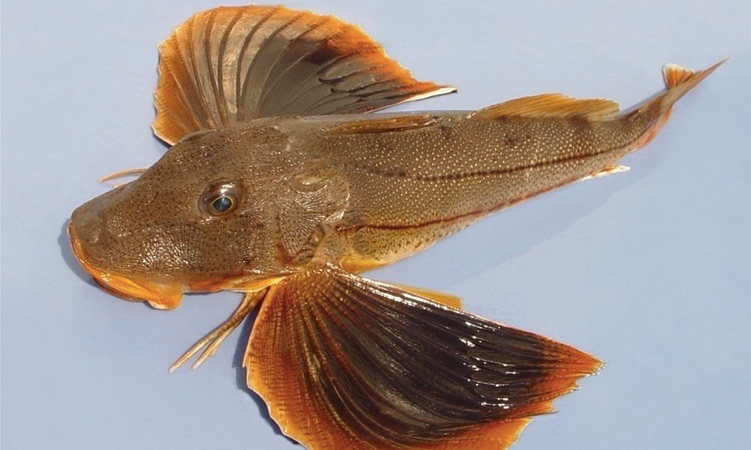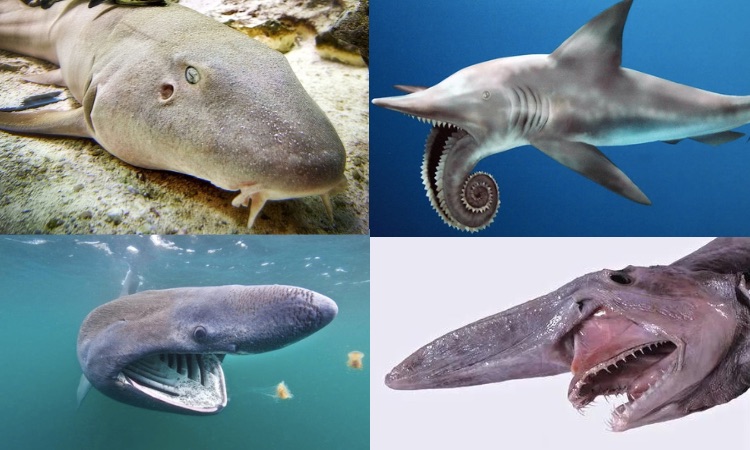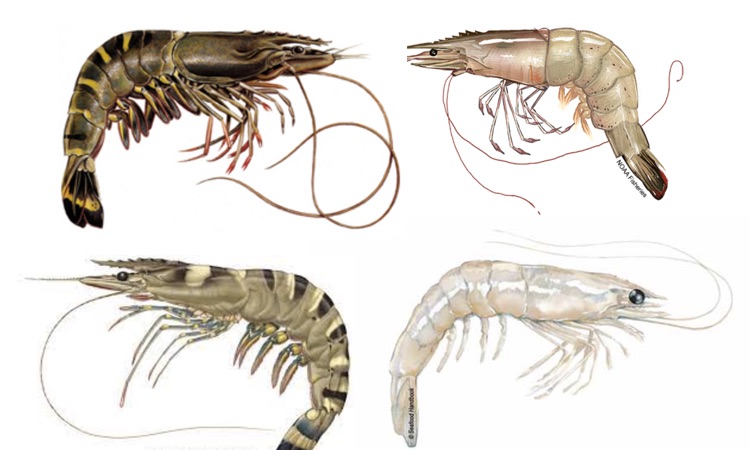Even though they might not look like it, jellyfish are some of the oldest creatures on Earth. Scientists have been curious about them for hundreds of years.
Recent discoveries in the fossil record show that they’ve existed for at least 500 million years. Some of these older species make up the biggest jellyfish in the world.
There are currently 2,000 different types of jellyfish living in every ocean globally. However, experts believe there are still thousands more waiting to be found. Read on to learn more about the big jellyfish on our planet.
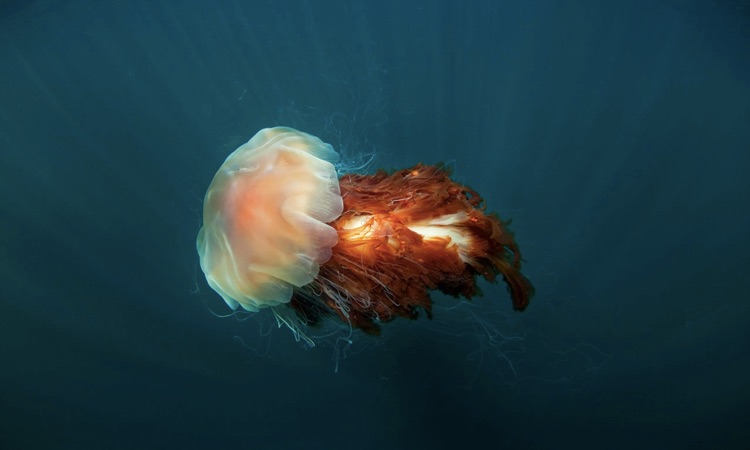
A Fascinating Species
Jellyfish come in a plethora of colors, sizes, and shapes; they’re one of the most interesting creatures alive.
Jellyfish are not only unique creatures, but they also have an exceptionally long lifespan. The Turritopsis dohrnii jellyfish, more commonly known as the immortal jellyfish, has the ability to go back to its younger self after it reaches adulthood if it is harmed or threatened in any way.
Under the right circumstances, this 4.5 millimeter jellyfish could theoretically live forever, scientists say. Jellyfish are often brightly-colored, have lengthy tentacles, and can deliver painful stings. Their colors may be blue, pink, purple, yellow or orange.
Although jellyfish are often beautiful, some can be deadly because they produce venom. Many different species of jellyfish exist and some have the ability to glow in the dark due to a trait called bioluminescence.
The Australian box jelly, more accurately called the “sea wasp”, has killed 5,568 people since 1954 and is rightly feared as one of earth’s most venomous creatures.
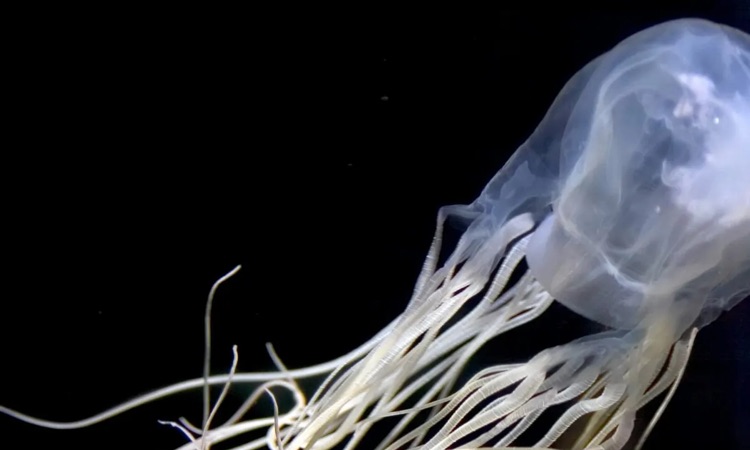
World’s Largest Jellyfish
Jellyfish are measured by the size of their head. The following 9 jellyfish have the biggest maximum bell diameter (the “head” of the jellyfish).
1. Lion’s Mane Jellyfish
The Lion’s mane jellyfish is categorically the biggest jellyfish in existence. The largest reliable sighting being recorded in 1865 near Massachusetts. This specimen was an estimated 7 feet wide and had tentacles measuring a whopping 120 feet long!
Lion’s mane jellies found in northern climates can grow up to 7 feet, while those inhabiting lower latitudes only reach an average diameter of 20 inches.
Lion’s mane jellyfish, often found in the Arctic Ocean or northern Atlantic and Pacific. They get their name from their long tentacles that resemble a lion’s mane. While they can grow up to 8 feet wide, their stings are usually not fatal.
2. Nomura’s Jellyfish
Nomura’s jellyfish, which can weigh up to an enormous 440 pounds, are found in the Yellow Sea and East China sea. They are the second biggest jellyfish in the world. They’re bell-shaped with a maximum size of 6 feet 7 inches. This puts them in the same size class as lion’s mane jellyfish.
Stings from Nomura’s jellyfish can be deadly. If not properly cooked, eating one of these jellyfish can also kill you. In Japan, however, there are some ice cream shops that use them in vanilla-flavored Jellyfish Ice Cream.
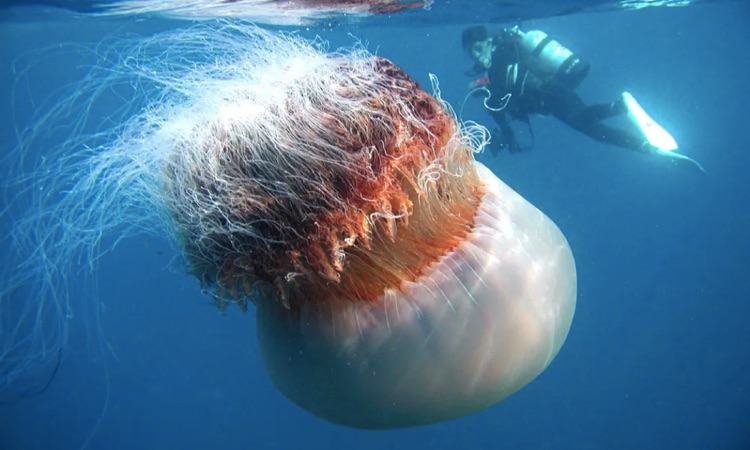
3. Barrel Jellyfish
Barrel jellyfish are the largest species of jellyfish in the United Kingdom. On average, they can grow to be 16 inches in diameter and 3 feet long. Some have however been recorded at an astounding 4 feet 11 inches wide!
Though barrel jellyfish have a wide geographic distribution, you’re more likely to find them in the Irish Sea or off the coasts of Southern and Western Britain. Additionally, their stings are usually harmless to humans.
4. Stygiomedusa gigantea
At a whopping 4 feet 7 inches in diameter, Stygiomedusa gigantea is by far the largest deep-sea jellyfish. Its four extremely long arms (32 feet!) are theorized to be used for grab and capture rather than stinging prey.
Although it has only been observed 118 times in the past 110 years, experts believe that Stygiomedusa gigantea is actually quite widespread in deep ocean environments. In fact, this species is one of the largest invertebrate predators in that ecosystem.
5. Pink Meanie
The biggest jellyfish of the meanie pink variety that has been confirmed was seen in the Gulf of Mexico, and it had a bell diameter (the width of its body) that was approximately three feet. Although some stories which have not been verified claim to have seen ones with diameters up to five feet.
Not only can these jellyfish sting you with their tentacles, which can grow up to 70 feet long, but they’ve also been known to consume 34 smaller jellyfish at once.
The pink meanie jellyfish was not classified as it’s own species until 2014 due to its rarity. It can cause a painful sting, but is otherwise harmless.
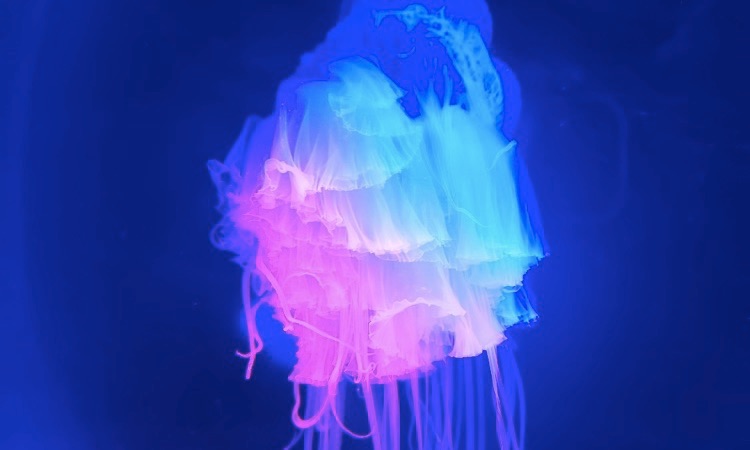
6. Black Sea Nettle
The black sea nettle jellyfish can have a bell size of up to 3 feet, and tentacles reaching 25 feet in length. Rarely observed in the wild, it wasn’t officially classified as a species until 1997. When spotted, the black sea nettle is often found swimming with Pacific butterfish.
The Pacific butterfish feeds on plankton collected by the jellyfish. It hides in the large bell of the jellyfish to avoid predators. Stings from this big jellyfish can be painful but are not lethal to humans.
7. Tiburonia Granrojo
The Tiburonia granrojo, better known as the “big red” jellyfish, is a deep-sea creature whose bell diameter can reach 2 feet 6 inches. This type of jellyfish resides 2000-4800 feet below sea level and has been found in the waters off Japan, Hawaii, Baja California, and western North America.
This particular species has red tentacles that are thick and used to capture prey. It does not have stinging capabilities.
While the earliest recorded sighting of a Tiburonia granrojo was in 1993, there is still much unknown about these deep-sea creatures. The majority of what we do know comes from data and pictures collected by remote-control submarine far down in the ocean.
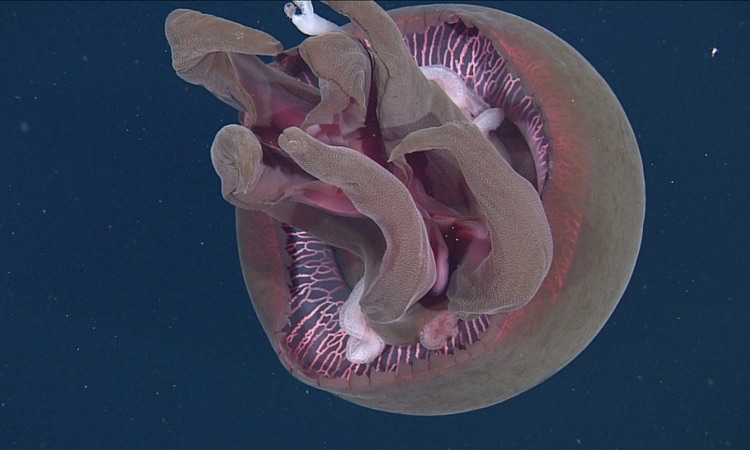
8. Australian Box Jellyfish
The Australian box jellyfish is the largest recorded bell size, averaging 19 inches in diameter. These sea creatures have long, barbed tentacles that can reach up to 10 feet. The nickname “sea wasp” comes from their incredibly venomous sting.
The box jellyfish is one of the deadliest animals on Earth. Just one sting can cause paralysis, cardiac arrest, and death in less than three minutes. The first person to survive a box jellyfish sting was 10-year-old Australian girl in 2010.
9. Atlantic Sea Nettle
This big jellyfish can grow up to 10 inches in diameter and has tentacles that can reach 1 foot 7 inches long. It is found in the Atlantic and Indian oceans, where it is preyed upon by sea turtles, ocean sunfish, and larger jellyfish.
The Atlantic sea nettle has a mutually beneficial relationship with blue crabs. The crab receives food and shelter from the jellyfish while the jellyfish becomes cleaner as the crab picks off parasites and debris. Though an effect from the sting of an Atlantic sea nettle can cause some moderate pain, it will not kill a human.

